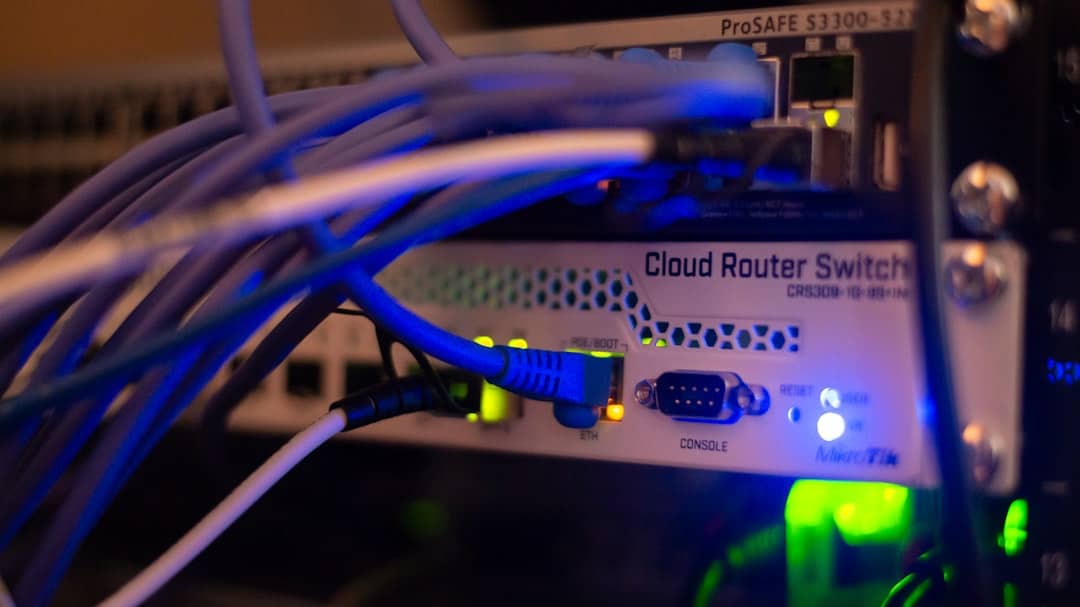Managed services involve outsourcing day-to-day management responsibilities and functions to improve operations and reduce costs. In IT, these services encompass network monitoring, security, data backup and recovery, and technical support. By engaging a managed service provider (MSP), businesses can delegate IT infrastructure management and concentrate on their core competencies.
This partnership allows organizations to leverage the MSP’s expertise and resources while accessing cutting-edge technologies and industry best practices. Typically, managed services are provided through a subscription-based model. The MSP proactively monitors and manages the client’s IT systems, handling tasks such as troubleshooting, issue resolution, routine maintenance, and updates.
This approach ensures that a business’s IT infrastructure remains secure, reliable, and optimized for performance. Managed services also offer scalability and flexibility, enabling businesses to adapt to evolving needs and demands efficiently.
Key Takeaways
- Managed services involve outsourcing IT operations to a third-party service provider for improved efficiency and cost-effectiveness.
- Security is a critical aspect of managed services, as it helps protect sensitive data and systems from cyber threats and breaches.
- To maximize security with managed services, it is important to implement robust security measures and protocols.
- Key components of secure managed services include network security, data encryption, regular security audits, and incident response planning.
- Outsourcing security to managed service providers offers advantages such as access to specialized expertise, 24/7 monitoring, and cost savings.
The Importance of Security in Managed Services
Comprehensive Security Strategy
A comprehensive security strategy should encompass various layers of protection, including network security, endpoint security, data encryption, and access control. Managed service providers can help businesses implement these security measures and ensure that they are regularly updated and maintained to address emerging threats.
Proactive Monitoring and Incident Response
By proactively monitoring for potential security vulnerabilities and responding to incidents in a timely manner, MSPs can help businesses mitigate the risk of data breaches and other security incidents.
Strengthening Security Posture
Managed service providers play a crucial role in helping businesses strengthen their security posture by implementing robust security measures and best practices.
Maximizing Security with Managed Services

Maximizing security with managed services involves taking a proactive approach to identifying and addressing potential security risks. This includes implementing advanced security technologies, such as intrusion detection systems, firewalls, and antivirus software, to protect against external threats. Additionally, managed service providers can help businesses establish robust security policies and procedures to govern access to sensitive data and ensure compliance with industry regulations.
Furthermore, managed services can provide businesses with continuous monitoring and threat intelligence to detect and respond to security incidents in real-time. By leveraging the expertise of MSPs, businesses can benefit from 24/7 security monitoring and rapid incident response capabilities. This proactive approach to security can help businesses stay ahead of potential threats and minimize the impact of security incidents on their operations.
Key Components of Secure Managed Services
| Component | Description |
|---|---|
| Firewalls | Hardware or software-based network security system that controls incoming and outgoing network traffic. |
| Intrusion Detection and Prevention Systems (IDPS) | Monitors network and/or system activities for malicious activities or policy violations. |
| Encryption | Process of converting data into a code to prevent unauthorized access. |
| Vulnerability Management | Process of identifying, evaluating, treating, and reporting on security vulnerabilities in systems and the software that runs on them. |
| Security Information and Event Management (SIEM) | Provides real-time analysis of security alerts generated by network hardware and applications. |
Secure managed services encompass a range of key components that are essential for protecting businesses from cyber threats. These components include network security, which involves implementing firewalls, intrusion detection systems, and virtual private networks (VPNs) to safeguard against unauthorized access and malicious activities. Endpoint security is another critical component, focusing on securing individual devices such as computers, mobile devices, and servers from malware and other cyber threats.
Data encryption is also a key component of secure managed services, ensuring that sensitive information is protected from unauthorized access during transmission and storage. Access control is another important aspect, involving the implementation of strong authentication mechanisms and user access policies to prevent unauthorized users from gaining access to critical systems and data. Additionally, regular security assessments and audits are essential components of secure managed services, allowing businesses to identify potential vulnerabilities and ensure compliance with industry regulations.
Advantages of Outsourcing Security to Managed Service Providers
Outsourcing security to managed service providers offers several advantages for businesses looking to enhance their security posture. By partnering with an MSP, businesses can benefit from access to a team of experienced security professionals who specialize in identifying and mitigating cyber threats. This can help businesses stay ahead of potential security risks and ensure that their IT infrastructure is protected against emerging threats.
Furthermore, outsourcing security to an MSP can provide cost savings for businesses by eliminating the need to invest in expensive security technologies and hiring dedicated security personnel. Managed service providers can offer scalable security solutions that are tailored to the specific needs of each business, allowing them to benefit from enterprise-grade security capabilities without incurring significant upfront costs. Additionally, by offloading security responsibilities to an MSP, businesses can free up internal resources to focus on strategic initiatives and core business activities.
Best Practices for Maximizing Security with Managed Services

Risk Assessment and Prioritization
Conducting regular risk assessments is crucial to identify potential vulnerabilities and prioritize security investments based on the level of risk. This proactive approach enables businesses to allocate resources effectively and address potential security threats before they become major issues.
Clear Security Policies and Procedures
Establishing clear security policies and procedures is essential to outline how sensitive data should be handled, accessed, and protected. These policies should be communicated to all employees and stakeholders to ensure everyone understands their role in maintaining a secure environment.
Incident Response and Employee Training
Businesses should ensure that their managed service provider has robust incident response capabilities in place to address security incidents in a timely manner. This includes establishing clear communication channels and escalation procedures to ensure that any security incidents are promptly addressed. Regular training and awareness programs for employees can also help reinforce good security practices and minimize the risk of human error leading to security breaches.
Choosing the Right Managed Service Provider for Security Needs
When selecting a managed service provider for security needs, businesses should consider several factors to ensure that they are partnering with a reputable and capable MSP. This includes evaluating the MSP’s track record in delivering secure managed services and their experience in addressing specific security challenges relevant to the business. Additionally, businesses should assess the MSP’s approach to security, including their use of advanced technologies, proactive monitoring capabilities, and incident response procedures.
Furthermore, businesses should consider the MSP’s compliance with industry regulations and standards related to data protection and privacy. This includes ensuring that the MSP has robust security controls in place to protect sensitive data and maintain compliance with relevant regulations such as GDPR or HIPAFinally, businesses should evaluate the MSP’s ability to provide scalable and flexible security solutions that can adapt to their evolving needs and growth objectives. In conclusion, managed services offer businesses a strategic approach to enhancing their IT operations while also strengthening their security posture.
By partnering with a reputable managed service provider, businesses can benefit from access to advanced security technologies, proactive monitoring capabilities, and experienced security professionals who specialize in identifying and mitigating cyber threats. With the increasing complexity of cyber threats, outsourcing security to an MSP can provide businesses with the peace of mind that their IT infrastructure is protected against potential risks while also allowing them to focus on their core business activities.
If you’re interested in learning more about the potential impact of virtual reality and the metaverse on cybersecurity, check out this article on What is the Metaverse. It explores the concept of the metaverse and how it could shape the future of technology and security. Understanding these emerging technologies is crucial for managed security services providers to stay ahead of potential threats and protect their clients’ data.
FAQs
What are managed security services?
Managed security services are outsourced security solutions that provide businesses with round-the-clock monitoring, management, and support for their security infrastructure. These services are designed to protect organizations from cyber threats and ensure the security of their data and systems.
What are the benefits of using managed security services?
Some of the benefits of using managed security services include improved threat detection and response, reduced operational costs, access to specialized expertise, compliance with industry regulations, and the ability to focus on core business activities.
What types of security services are typically included in managed security services?
Managed security services can include a range of security solutions such as network security, endpoint security, threat intelligence, security information and event management (SIEM), vulnerability management, and incident response.
How do managed security services differ from traditional security solutions?
Managed security services differ from traditional security solutions in that they are outsourced to a third-party provider who is responsible for monitoring, managing, and responding to security incidents. This allows organizations to leverage the expertise and resources of the service provider without having to build and maintain their own security infrastructure.
What should businesses consider when choosing a managed security services provider?
When choosing a managed security services provider, businesses should consider factors such as the provider’s experience and expertise, the range of services offered, the quality of their security operations center (SOC), their ability to customize solutions to meet specific needs, and their track record in delivering effective security solutions.











Leave a Reply